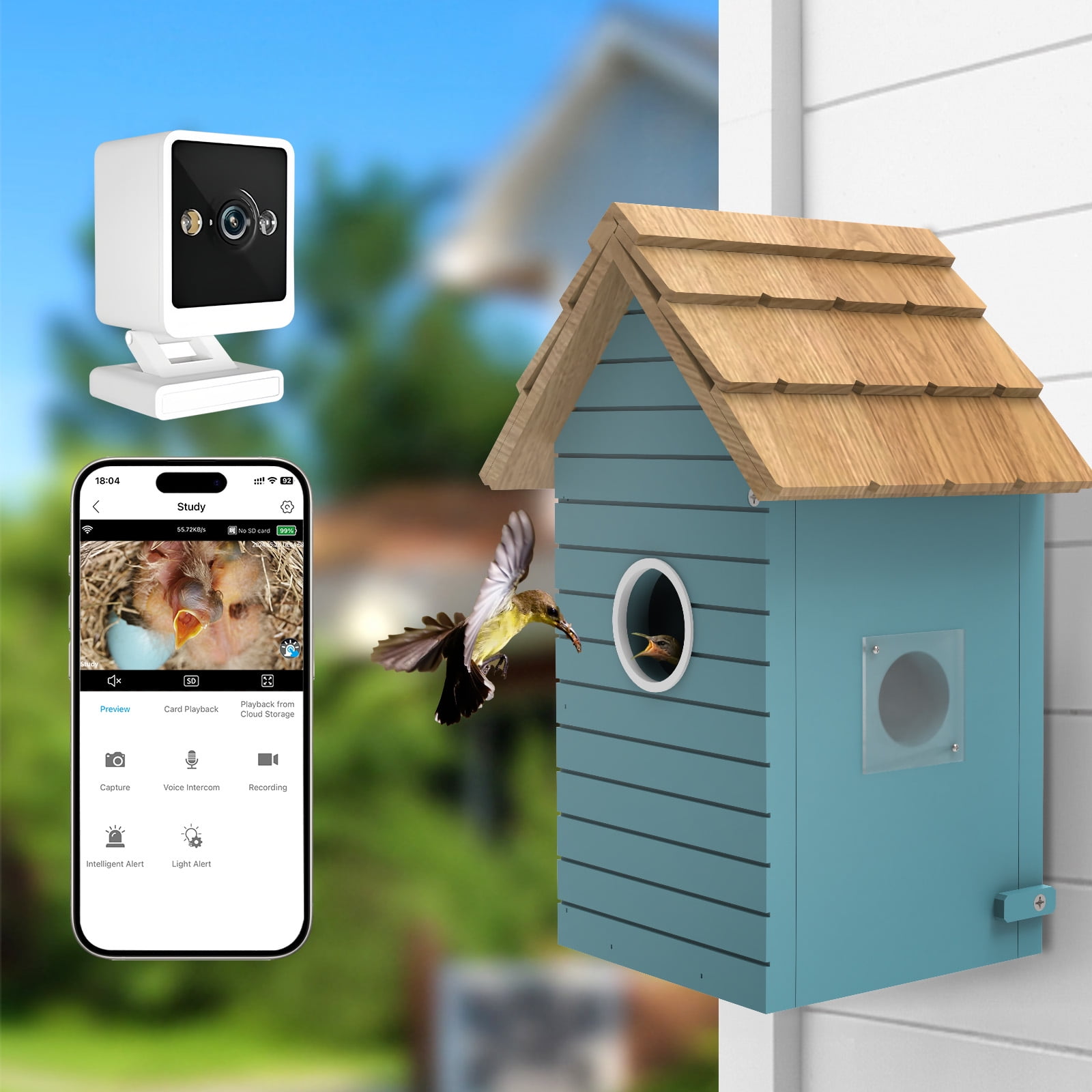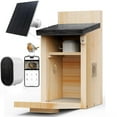Bird House With Camera And App

The humble birdhouse, once a simple haven for nesting birds, is undergoing a high-tech transformation. Fueled by advancements in miniaturized camera technology and smartphone connectivity, a new generation of birdhouses is emerging, offering unprecedented access to the secret lives of avian families. This fusion of nature and technology is sparking both excitement and concern among bird enthusiasts and conservationists alike.
At the heart of this innovation lies the "smart" birdhouse, a device equipped with a miniature camera, often boasting high-definition video, night vision, and even audio recording capabilities. These devices connect to a smartphone app via Wi-Fi, allowing users to observe nesting birds in real-time, record videos, and capture photographs. The trend raises questions about data privacy, potential disturbance to nesting birds, and the ethical implications of constant surveillance of wildlife, issues that are increasingly coming under scrutiny.
The Rise of the Smart Birdhouse
The popularity of smart birdhouses is undeniable. A quick search online reveals a plethora of options, ranging from DIY kits to professionally manufactured models, priced from a modest $50 to upwards of $300. Online retailers like Amazon and specialized birding supply stores report a steady increase in sales, indicating a growing demand for these technologically enhanced habitats.
Several factors contribute to this surge in interest. Firstly, the ease of access to technology has made these devices more affordable and user-friendly. Secondly, the COVID-19 pandemic, which saw a rise in backyard birding as people sought solace in nature, further fueled the demand for immersive birdwatching experiences. Finally, social media has played a significant role, with users sharing captivating footage of nesting birds, thus promoting the trend to a wider audience.
Features and Functionality
Modern smart birdhouses come packed with features designed to enhance the viewing experience. Many offer motion detection, which triggers recording when a bird enters or exits the house. Others have built-in microphones, allowing users to listen to the chirps and calls of the chicks. Still others offer temperature and humidity sensors, relaying data about the internal conditions of the birdhouse.
The associated smartphone apps allow users to remotely adjust camera settings, share footage with friends and family, and even participate in citizen science projects. Some apps provide identification guides, helping users identify the species nesting in their birdhouse, further enriching the educational experience.
Concerns and Criticisms
Despite the allure of witnessing birdlife up close, the advent of smart birdhouses has also drawn criticism from conservationists and ornithologists. One major concern revolves around the potential for disturbance to nesting birds.
According to the Royal Society for the Protection of Birds (RSPB), excessive human interference, even unintentional, can negatively impact nesting success. "Frequent visits to the nest box, even just to check on progress, can cause the parents to desert, leaving eggs or young to die," states their website. They argue that the continuous monitoring offered by smart birdhouses could lead to increased stress for the birds, especially during critical periods like egg-laying and chick-rearing.
Another concern is the issue of data privacy. Many smart birdhouses transmit video and audio data over the internet, raising questions about data security and potential vulnerabilities to hacking. While manufacturers often claim to employ encryption and other security measures, the risk of unauthorized access remains a concern. The question of who owns and controls the data generated by these devices is also a point of contention.
Furthermore, some critics argue that the constant surveillance of wildlife, even with the best intentions, can be ethically problematic. They argue that it can lead to a sense of entitlement and a blurring of boundaries between humans and nature. The inherent voyeuristic aspect of observing animals in their most vulnerable state raises questions about respect for wildlife and the importance of maintaining a degree of separation.
Manufacturer Responses and Best Practices
Some manufacturers are taking steps to address these concerns. Some offer adjustable camera angles to limit the field of view and reduce the risk of disturbing the birds. Others incorporate features like infrared LEDs for night vision, which are less disruptive than traditional white light.
Several companies promote responsible usage guidelines, advising users to minimize their viewing time and avoid disturbing the nest box during critical periods. They also emphasize the importance of maintaining a secure Wi-Fi network and protecting personal data. Brinno, a company that produces birdhouse cameras, has a guide on their website about how to install cameras in birdhouses and not disturb the birds.
The Future of Birdwatching
The integration of technology into birdwatching is likely to continue. Future iterations of smart birdhouses may incorporate AI-powered features that automatically identify bird species, analyze behavior patterns, and even detect signs of disease or distress. The data collected from these devices could contribute to valuable research on bird populations and conservation efforts.
However, it is crucial that this technological advancement is approached with caution and a deep respect for wildlife. Striking a balance between the desire for observation and the need to protect nesting birds will be essential. Clear ethical guidelines, responsible manufacturing practices, and informed user behavior are vital to ensuring that smart birdhouses enhance, rather than harm, the natural world.
Ultimately, the success of smart birdhouses hinges on our ability to use them responsibly and ethically. Only then can we unlock their potential to educate, inspire, and contribute to the conservation of these fascinating creatures.


















